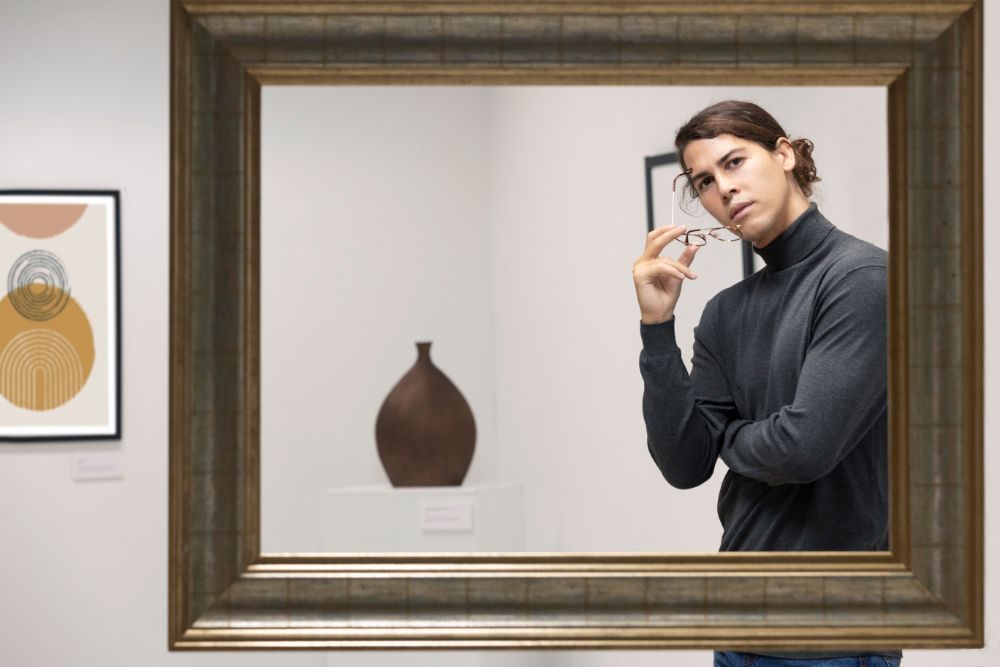Investing in fine art can be an enriching journey that not only adds aesthetic value to your surroundings but also holds the potential for significant financial growth. As art appreciation continues to flourish, many individuals are considering art as a viable investment opportunity. However, navigating the art market can be daunting without proper knowledge and guidance. In this article, we will explore the fundamentals of investing in fine art and understanding its value, providing insights into what types of art are likely to increase in value, why art is considered a sound investment, and how to assess the value of a piece of art.
Why Is Art A Sound Investment?
Art is often regarded as a sound investment due to its unique characteristics and historical performance. Unlike traditional financial assets, such as stocks or bonds, art has intrinsic value derived from its cultural and artistic significance. Additionally, art can act as a hedge against inflation and currency depreciation, as its value is not directly tied to economic fluctuations. Furthermore, the limited supply of original artworks contributes to their scarcity value, making them highly sought after by collectors and investors alike.
Different Reasons Why Art Collecting Is The Next Big Thing In Investing
Art collecting has emerged as a compelling avenue for investment, drawing attention from both seasoned investors and newcomers alike. This surge in interest can be attributed to a variety of factors that have reshaped the landscape of the art market. From the increased accessibility facilitated by online platforms and digital technologies to the utilization of blockchain technology for enhanced transparency, the realm of art collecting has undergone significant transformation. Moreover, the allure of art extends beyond financial gains, encompassing cultural significance, emotional resonance, and aesthetic enjoyment. Art collecting has emerged as the next big thing in investing for several reasons:

-
Increased Accessibility
The advent of online platforms and digital technologies has democratized the art market, making it more accessible to a wider audience. Now, individuals from diverse backgrounds can explore and invest in art from the comfort of their homes, eliminating traditional barriers to entry. -
Attraction to New Generations
The accessibility of the art market has piqued the interest of younger generations who recognize the potential of art as an alternative asset class. Millennials and Gen Z investors are drawn to the tangibility and cultural significance of art, seeking to diversify their investment portfolios beyond traditional options. -
Emergence of Art Investment Funds
The rise of art investment funds has provided investors with opportunities to participate in the art market without the need for substantial capital or expertise. These funds pool resources from multiple investors to acquire art assets, offering diversification and professional management of art portfolios. -
Utilization of Blockchain Technology
Blockchain technology has revolutionized the art market by providing greater transparency and security in art transactions. Through blockchain platforms, investors can verify the authenticity and provenance of artworks, reducing the risk of fraud and enhancing trust in the market. -
Tangible and Intrinsic Value
Unlike traditional financial assets, art possesses tangible and intrinsic value derived from its cultural and artistic significance. Artworks are unique and irreplaceable, offering investors a sense of ownership and connection to the creative process. -
Potential for Long-Term Appreciation
Art has historically demonstrated the potential for long-term appreciation in value. While financial markets may fluctuate, quality artworks have the ability to retain or increase their value over time, serving as a hedge against economic uncertainty and inflation. -
Cultural and Social Impact
Investing in art not only offers financial returns but also contributes to cultural preservation and social impact. Supporting artists and cultural institutions through art collecting promotes creativity, diversity, and innovation in society, enriching communities and fostering cultural exchange. -
Emotional and Aesthetic Enjoyment
Beyond financial considerations, art collecting provides emotional and aesthetic enjoyment to investors. Owning artworks that resonate with personal tastes and interests adds beauty and meaning to one's living space, enhancing quality of life and well-being.
How To Tell If A Piece Of Art Is Valuable?
Determining the value of a piece of art requires a combination of subjective and objective assessments. Factors such as the artist's reputation, provenance, condition, and market demand all play a significant role in determining the value of a artwork. Additionally, consulting with art experts, appraisers, and dealers can provide valuable insights into the potential value of a piece. Researching recent auction results and comparable sales can also help gauge the market value of a artwork.
What Types Of Art Are Already Increasing In Value?
Determining the value of art can be quite nuanced, influenced by various factors such as the artist's reputation, the scarcity of the artwork, and the demand from collectors. Typically, artworks created by well-established artists with a solid track record in the art world are more likely to appreciate in value over time. Similarly, pieces crafted by emerging talents may also see an increase in value if the artist gains recognition or if their work becomes highly sought-after by collectors.
Moreover, the rarity of an artwork plays a significant role in determining its worth. Limited edition pieces or unique creations tend to hold more value compared to mass-produced artworks. Additionally, the level of demand for an artist's work can significantly impact its value. Artworks in high demand among collectors are more likely to experience appreciation in value over time.
In essence, predicting the value of art can be challenging and depends on various factors. Conducting thorough research and understanding both the artist and the market are crucial steps when considering art as an investment.
What Type Of Art Will Increase Most In Value In Five Years?
Certain types of art have already demonstrated significant appreciation in value in recent years.
- Contemporary Art: Over recent years, contemporary art has witnessed remarkable appreciation in value, especially pieces by emerging artists and those hailing from diverse cultural backgrounds. This surge in demand has not only elevated the prices of contemporary artworks but also underscored the importance of inclusivity and representation in the art world.
- Underrepresented Regions: Art from underrepresented regions, including African, Asian, and Latin American art, has garnered increased recognition and appreciation on a global scale. Collectors are increasingly drawn to the rich cultural heritage and unique perspectives offered by artists from these regions, leading to significant appreciation in the value of their artworks.
- Niche Categories: Niche categories such as street art, photography, and digital art have emerged as notable areas of investment, experiencing notable growth in value. Once considered unconventional or avant-garde, these art forms have now gained mainstream acceptance, attracting both seasoned collectors and new enthusiasts seeking to diversify their portfolios and tap into emerging trends.
Final Thought
In conclusion, investing in fine art can be a rewarding endeavor that offers both aesthetic enjoyment and potential financial gains. By understanding the factors that influence the value of art and staying informed about market trends, investors can make informed decisions when building their art collections. Whether you're a seasoned collector or a novice investor, the art market offers a diverse range of opportunities for appreciation and growth. As with any investment, thorough research, patience, and a discerning eye are essential for success in the world of art investing.

